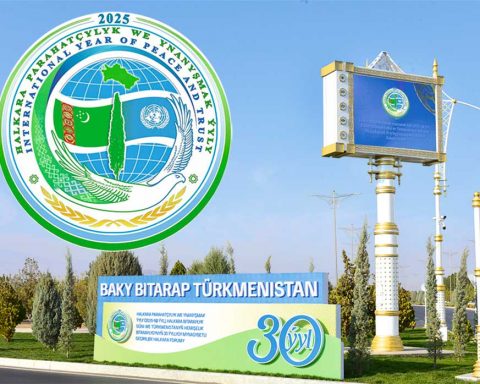We live in an age of perma-crisis.
Here in the WHO European Region we have faced an unprecedented number of emergencies in recent years, including disease outbreaks and a pandemic, major escalations of conflict, extreme weather events, and natural or man-made disasters.
In addition, the European Region faces an increasing burden of forced displacement and migration – much of it because of conflicts or catastrophes – and currently hosts more than a third of the global international migrant population. Full-scale war in Ukraine these past two years alone has led to 5.4 million Ukrainians applying for asylum or similar protection across Europe. An estimated 10 million Ukrainians, including children, are at risk of mental health issues. All of this feeds into a sense of being in a permanent state of crisis.
With over 75 years of experience responding to health emergencies, WHO has learnt that when an emergency hits, more often than not the people who may be most at risk are those who were already vulnerable. This includes people who already required medical attention well before the crisis, people who live with noncommunicable diseases (NCDs) or chronic conditions like heart disease, cancer, asthma, or diabetes.
Yet when an emergency occurs – be it natural or man-made – the most visible victims are those immediately caught up in the violence of conflict or the dangers of a natural disaster. We must not ignore these often dramatic and life-saving needs, but at the same time, we must plan for the ‘invisible’ impact of emergencies and disasters on health.
I saw this with my own eyes when I visited northern Ukraine near the border with Belarus, not long after the war began. Not a single pharmacy or primary healthcare clinic was left standing. I spoke to an older lady who no longer had access to vital medicines to manage her illness, and she didn’t have enough money to evacuate to a safer part of Ukraine. So she stayed put and awaited death, either from the war or her illness, whichever came first. That’s why, together with the Ukrainian Ministry of Health, we helped install medicine dispensers in the area, to ensure patients could at the very least access the medicines they need to manage their NCD.
We have seen it time and time again: cancer and diabetes patients caught up in a conflict struggling to find prescription medicines, with devastating consequences for their health; the elderly with chronic conditions being left to cope on their own with power and water cuts during natural disasters; or the immunocompromised dying alone in their homes during extreme heatwaves.
All these crises illustrate how these shocks bleed into each other and blur any artificial distinctions we might make between communicable and noncommunicable disease, between environmental and personal health, and between the health concerns of one country versus those of its neighbors. Indeed, it is tragically simple to predict who will die first when the next shock comes around, and sadly it is those with the least power and resources in society, those with the lowest health reserves, such as the youngest and oldest, and those who are living with pre-existing conditions.
Following last year’s devastating earthquakes in Turkiye, international Emergency Medical Teams came ready to treat patients with crush injuries, but many focused on providing primary healthcare services and helping to ensure that earthquake affected communities could stay on-course with their routine medical needs.
And in Ukraine, NCD-related deaths continue to increase during the ongoing conflict. People who have lived for years with a well-managed heart or respiratory condition, are suddenly at acute risk of dying.
The need for stronger work to serve patients with chronic diseases also came to the fore during the COVID-19 pandemic. While our early response was focused on stopping the SARS-CoV-2 virus from spreading, we quickly understood that we also had to keep routine health services going. My call is for this dual track response to be applied in all emergencies, all crises, all disasters.
It bears repeating that noncommunicable diseases are by far the leading cause of death across the WHO European Region. Taken together, the four main NCDs – cardiovascular diseases, cancer, diabetes, and chronic respiratory diseases – account for a staggering 90% of deaths regionwide. We must prioritise them during emergencies just as we do in our routine health programmes.
Preventing NCDs must be the cornerstone of all health policy in an age of perma-crisis. That’s because the better we are at preventing NCDs, the more resilient our people and health systems will be when an emergency strikes.
That’s why, together with the Government of Denmark, WHO/Europe is co-hosting a high-level meeting on NCDs in humanitarian settings, bringing together leaders and decision-makers to help countries find solutions.
It’s time to shine a light on the ‘invisible’ patients, not least because countries have committed to reducing premature mortality from NCDs in the UN Sustainable Development Goals. As we strive to build resilient health systems to meet tomorrow’s challenges, including future pandemics and the ever-mounting impacts of climate change, we need to design emergency policies and plans that adequately meet the legitimate needs of people living with NCDs.
NCDs will affect practically every single one of us at some point in our lives. Addressing NCDs in emergencies is therefore not an option – but an imperative for building resilient people and societies. As Artur, a teenager from Ukraine living with diabetes, puts so eloquently: ‘life as a refugee is not easy, but life as a diabetic is even more challenging.’
United Nations
Turkmenistan








